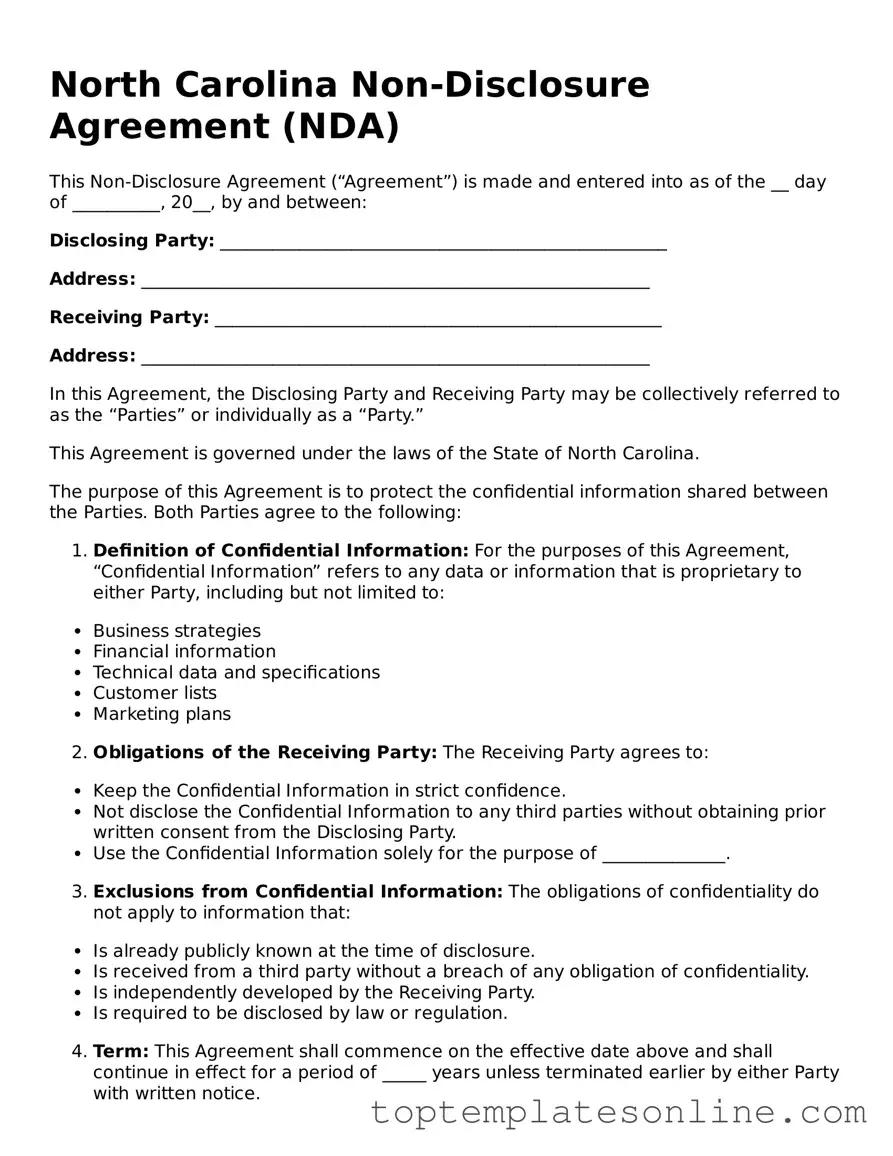Blank Non-disclosure Agreement Template for North Carolina State
A North Carolina Non-disclosure Agreement (NDA) is a legal document designed to protect confidential information shared between parties. This agreement ensures that sensitive information remains private and is not disclosed to unauthorized individuals. By establishing clear terms, it fosters trust and facilitates open communication in business relationships.
Customize Non-disclosure Agreement Here
